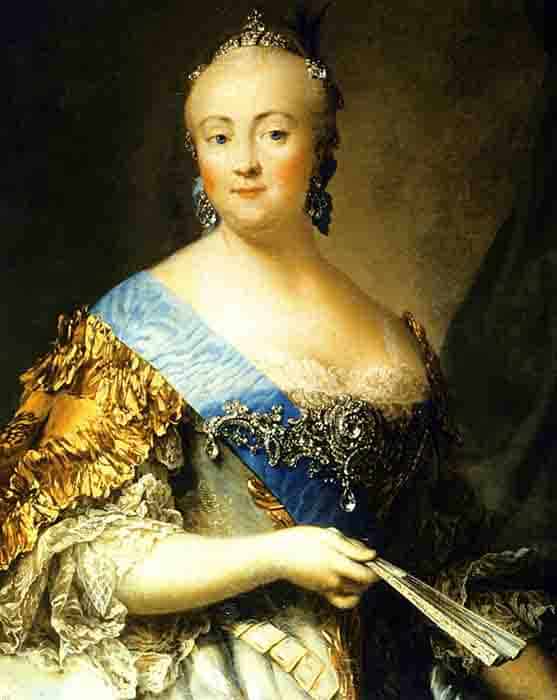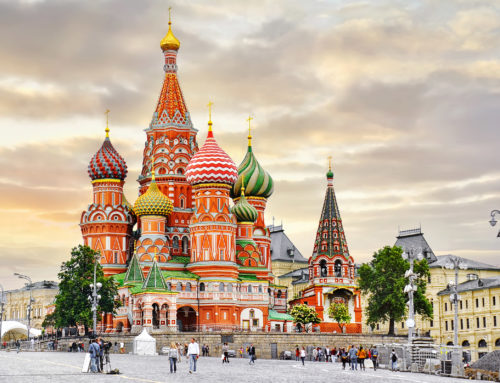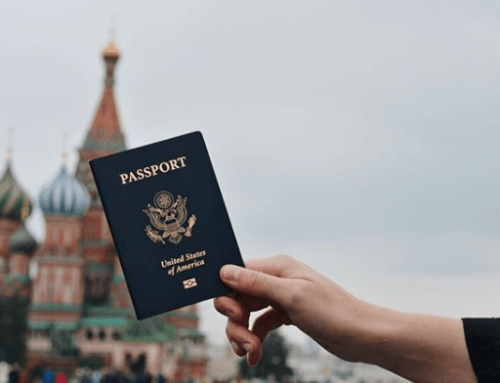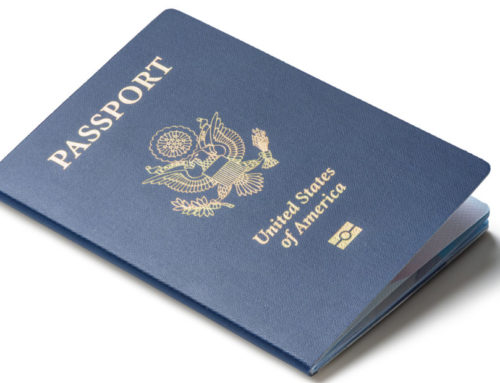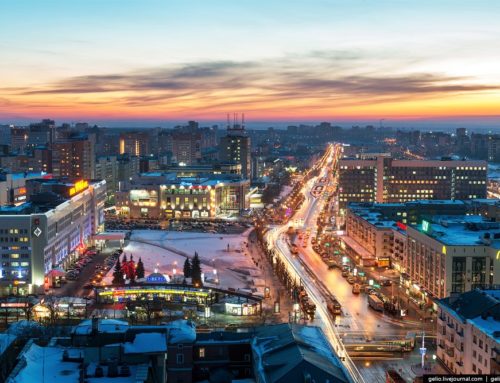Also known as Elizabeth Petrovna, Elizabeth of Russia was born in 1709 to Peter, the Great’s family. Her mother was Peter’s mistress – Catherine. She had an extraordinary childhood, even though born out of wedlock. The intention was for her to marry one of the French royal families. As a result, she was well taught in European culture.
While growing up, Elizabeth spent most of her days as a socialite. She attended a lot of balls and was well versed in Russian and European fashions. Her interest in politics was little. There was French royal matchmaking prepared for her that was a failure. Elizabeth resorted to the Russian court royal guardsmen for love.
Even though Elizabeth cared less about politics, in the 1730s, she found herself at the center of the power struggle. Her parents’ and siblings’ death led to her cousin (Anna Ioannovna) becoming the Czar in 1730.
Anna’s love and administration for the Germans and their culture made her favor them throughout her reign. As a result, she had Germans in crucial military and political roles even in Russia and forced the people to adopt the German Culture.
This did not sit well with the people because the Russian nobles and people hated the German and their influence in their country. The best person to bring normalcy back to their homeland was Elizabeth, the best Monarch’s daughter. This led to many plots to oust Anna.
Reign of Elizabeth
The death of Anna loannovna in 1740 led to the accession of young Ivan VI and his mother (Anna Leopoldovna) as regent. Anna Leopoldovna was a German by birth, which fueled the people’s hatred for her.
Elizabeth, roughly a year after Ivan VI’s accession, with the royal guards’ assistance, staged a coup. With immense support from the nobles and the masses, Elizabeth took the throne, which led to the incarceration of Ivan VI and Anna Leopoldovna.
In 1752, she was crowned as Elizabeth 1 of Russia, and her reign signaled a remarkable change in Russia’s policy. She got rid of all the Germans from the government and military. She also made a decree that only Russians by birth can be appointed to the top positions of the government. She supplanted German and adopted French as the language of the nobility.
Elizabeth got rid of the supreme court that led to Anna’s appointment, and the ancient patrilineal succession lines were reinstated.
Elizabeth’s Character
Vasily Klyuchevsky – Russian history gave a succinct description of Elizabeth’s character.
“Elizabeth was always in good spirit and very lively. She was tall, huge, and graceful with good stature. She was always joyful and loved to impress. She was good looking even in male’s dress.”
Peter the Great had many successors, but she was the most legitimate, although that did not give her free ticket to the throne. Elizabeth took after her father in many ways. She was as energetic as her father, which somewhat explained her seizing power by a coup. Elizabeth could construct world-class palaces in a day and journey from St. Petersburg to Russia in 2 days.
Elizabeth, however, was lazy and fickle. The thought of anything serious repelled her. She was not interested in the seemingly complicated affairs of Europe, neither did she have interest in her chancellor’s diplomacy.
Her accession to the throne was a ticket to help realize her dreams and fantasies. All of Elizabeth’s money went on balls, theaters, masquerades, and trips. There were times her court looked like a theater with Operas from Italy and French comedians.
Elizabeth’s living quarters and room were nothing to write home about. They were small, dirty, crowded, and complete opposite of the extravagant ballrooms. Her quarters were characterized by doors that wouldn’t shut, water entering the building, which led to a cold and damp room. Pieces of furniture like tables, beds, mirrors, and others were transported from one place to another, and some had to be dismantled for easy movement.
Poverty was at its extreme during Elizabeth’s period. There were piles of unpaid bills and a giant uncompleted Winter Palace that already gulped huge funds from the treasury. It was Elizabeth’s dream to live in the Palace no matter how short the duration. However, the architect could not complete a substantial part of it because the French were not willing to loan her the goods.
Elizabeth’s Reign
Elizabeth was crowned as the new Empress on 25th April. She was pretty popular and widely accepted by the people compared to the old Empress. She replaced the Supreme Court with the Senate.
With a massive interest in Arts, Elizabeth established the first University in Russia. She saw Russia through two significant conflicts in Europe – the Seven-year War (1756 and 1763) and the Australian War Succession.
These were two significant wars that involved the powerful countries in the world then. Elizabeth had an alliance with Australia and France, which helped in the defeat of Prussia. Her advisers helped negotiate a land dispute between Sweden and Russia, which exited for long.
During her reign, she also strengthened the relationship between Great Britain and Russia, which supported Russia’s growth to become one of the top European Powers.
She was a pretty religious empress and an interest in many significant social and cultural advancements. There were considerable donations in cash to the Russian Orthodox Church, which received massive applaud from the citizens.
Elizabeth was one of the most celebrated leaders in Russia, and it was believed that her leadership qualities came from her father. She had an Art foundation, while Science and Art thrived when she was reigning. In addition to the first University, many art institutions rose while she was in power. Capital punishment came to an end under her reign, and there was no single Russian executed while she was in control.
Even though culture and Art thrived while Elizabeth was in power, she had no genuine interest in severe economic policies or politics. She was more concerned with her extravagant lifestyle, which explained the 15,000 dressed found after her death in 1762.
The Seven-Year War
Asia, Europe, and America engaged in a war that many argued should have been called the First World War. Even though Russia had no part in the war, Elizabeth joined the league with Austria. Elizabeth dreaded the ally between great Britain and Prussia, which she believed could pose a severe threat to her kingdom. This made her attack Prussian troops led by Frederick II.
She defeated Prussia in 1759 with hundreds of thousands of soldiers and conquered Frederick II, who was said to be the most skilled European warrior. While Prussia did not surrender to Russia completely, they ultimately defended their territory for two consecutive years.
Frederick II wanted to surrender to Elizabeth and sign a peace treaty in 1762. He reached out to her at St. Petersburg but discovered that Elizabeth was dead a couple of days ago.
Peter III, the successor of Elizabeth, was a great fan of Frederick II. He did not acquire the lands Prussia wanted to surrender. Instead, he returned all the land his predecessor, Elizabeth, conquered. This was a costly move that Russia paid for dearly. Hundreds of thousands of lives were lost in a war that resulted in nothing to Russia.
Elizabeth’s Personal Life
Elizabeth of Russia was a young and beautiful woman who dated many men while she was young. She married none of them and had no kids. A lot of people, especially those from noble families, considered Elizabeth of Russia an illegitimate Child because her parents were not officially wedded before her birth. This made it pretty difficult for Elizabeth to get a proper suitor who could have married her.
Marrying a commoner also came with consequence as she would have given up her throne. As a result, Elizabeth decided to it was better she remained single throughout her life.
Elizabeth was indeed a beauty when she was young. She was also jealous and proud of ladies whose beauty outshined hers. She lavished money on clothes and other things.
Elizabeth’s Legacy
Elizabeth was the last authentic Romanov that governed Russia. She had large battalions of the army at her command, which provided an excellent opportunity to remold Russia. She had a tremendous opportunity to reshape the destiny and map of Russia and Europe.
However, she had an affinity for pleasures and a preference for partying. Nonetheless, Russians respected her place and impact in the country’s history due to the education and cultural restructuring she brought to the country.
The Winter Palace still has enormous baroque masterpieces, the Smolny Cathedral at Saint Petersburg are all standing tall and preserving their founder’s memory.
Elizabeth’s Construction Projects
There were some architectural masterpieces constructed during Elizabeth’s reign. With her love for architecture, she pioneered and financed many of them. Reconstruction and renovation of the Peterhof Palace by architect Bartolomeo Rastrelli was one of her many projects. The rebuilding involved adding a lot of wings between 1745 and 1755.
One of her legacies was the Winter Palace, even though she didn’t live to see the completion. It was said that there were 1,500 rooms, 1945 windows, and 1786 doors in the Palace. It also contained living quarters for imperial families and bureaucratic offices. She also constructed Smolny Convent, and history had it that she was the only Russian sovereign to build that many churches.
It mattered to Elizabeth that the buildings were completed on time. As a result, work went on all year round, even in the coldest winter months. Hundreds of thousands of rubles, raised by taxes were devoted to the project. There were inadequate resources, which led to more taxes on salt and alcohol to cover the extra costs.
In a way, Elizabeth’s love for extravagance benefited the country’s infrastructure immensely. Since she needed goods brought to Russia from all over the world, many roads were constructed and modernized during her reign.
Elizabeth’s Death
Elizabeth’s health took an adverse turn in 1750 and grew worse. Even though she had doctors prescribe medicine for her, she vehemently refused them.
She died on 15th January in 1762, with her nephew Peter III succeeding her. She already named Peter her successor long before she died.
Elizabeth’s body was burned at the Cathedral of Peter and Paul located in St. Petersburg. Peter, her cousin, succeeded her as the new emperor even though he had a short reign and was killed. Catherine, his wife, became the new Empress and ruled Russia for quite a long time.
Your Russian Visa is Guaranteed with Visa Express
Elizabeth’s legacy in Russia today is there speaking for her. There are quite a several magnificent structures that stand in Russia today, thanks to Elizabeth’s reign. These have been a source of attraction to a lot of tourists.
If you will like to visit Russia, the only thing that stands between you and Russia is a visa. Luckily, getting a Russian Visa is not a complicated process, provided you leave it to the professionals.
We at Visa Express are skilled at helping clients get their Russia visa approved seamlessly. You can contact us to handle everything about your visas, like crosschecking your application form, helping with your passport photo specification, and every other thing you might need.
Get in touch with us today and have an easy passage to Russia.
доскоройвстречи (See you soon)

